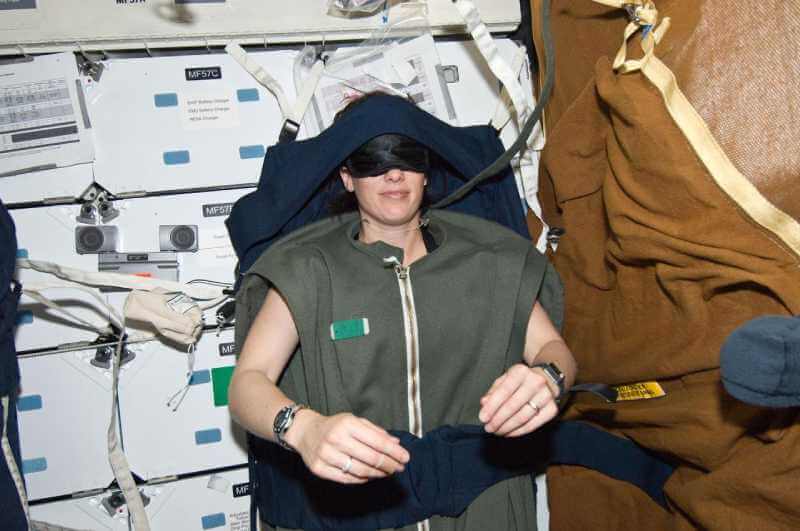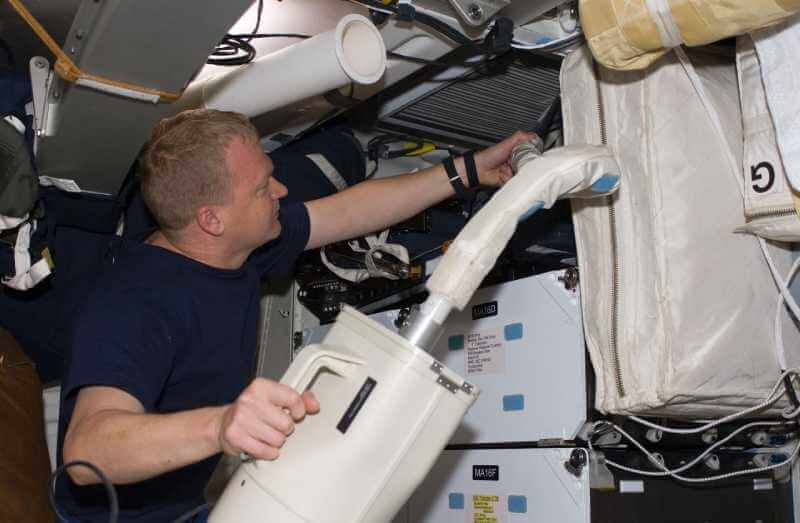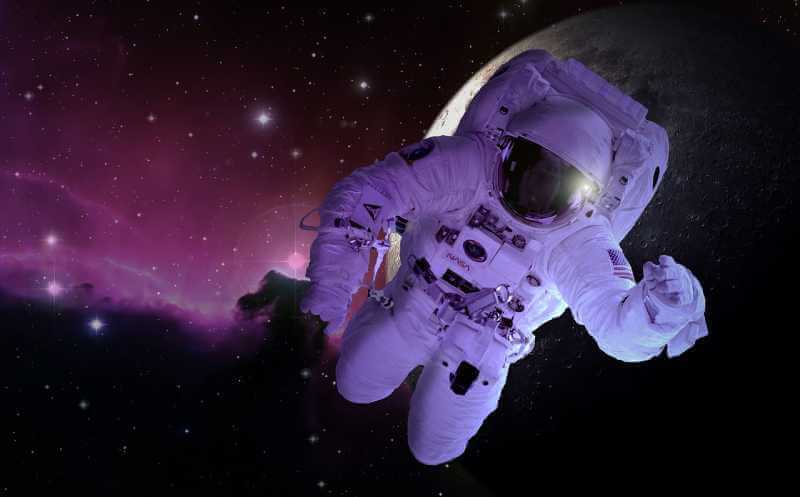Life for an astronaut can be tough in outer space as even the most mundane tasks turn into challenges. Getting things done when your stuff dances weightlessly through the cosmos is certainly no ordinary thing.
But, among all the chaos, there are many fun facts about astronauts that will make your gravity-bound mind spin faster than a rogue asteroid.
So, let’s launch into the orbits of fun facts, where we’ll learn about age-defying feats, space cuisine, mysterious space smell, and lots of other interesting stuff.
The Oldest and Youngest Astronauts
Validating the age-old saying “Age Is Just A Number”, John Glenn, the oldest astronaut, flew on the Space Shuttle Discovery back in 1998 at the age of 77.
On the other end of the spectrum, we find Gherman Titov, who at the young age of 25, completed an orbit around the Earth on the Vostok 2 in 1961.
His record has been broken by Oliver Daemen, who became the youngest person to travel to space at the age of only 18.
Quality Space Cuisine
Eating in space is quite a unique experience due to the absence of gravity. Thanks to the gravity-less environment, eating becomes a difficult affair as fluids start to pool in the sinuses of astronauts.
To counter this, astronauts’ meals are specifically made with extra herbs and spices. The food is also dehydrated or packaged in a style that demands minimal need of refrigeration and preparation time.
Now, it’s easy to assume that they have a boring culinary routine and menu. But I got pleasantly surprised learning that astronauts actually enjoy a wide array of foods, that includes ice creams, fruits, and sometimes even burgers and pizzas!
Temporary Increase in Height
When astronauts spend an extended period in space, they can experience an interesting phenomenon about their height. Without gravity compressing the spine, astronauts can sometimes get a temporary increase in their height.
This growth isn’t much; on average, an astronaut will grow around 2 to 3 inches at best. Do keep in mind that this height gain is temporary. As soon as the astronauts return to Earth, they get back to their original height.
Experiencing Space Smell
Many astronauts have reported that they have found a distinct “Space Smell” after taking a spacewalk. This smell is described as a mix of ozone, seared steak and gunpowder.
Longest Spacewalk Record
Anatoliy Solovyev and Pavel Vinogradov performed the longest single spacewalk in history in 1997. They spent 8 hours and 56 minutes outside the Mir space station, where they conducted experiments and maintenance tasks.
Different Sleep Conditions
In space, getting a good night’s sleep can be quite challenging. Astronauts need to sleep in sleeping bags. These bags are attached to the walls or floor so that they won’t start floating all over.

As bedtime approaches, astronauts secure themselves in their sleeping bags. It protects them from bumping into each other or to any spaceship equipment.
Gardening in Space
To produce fresh vegetables and infuse a touch of nature into the confines of their space shuttle, astronauts often start space gardening. In their special plant growth chamber, they grow plants like tomatoes, lettuce, zinnias, and mustard greens.
These botanical experiments serve a greater purpose than just passing the time; they also help scientists to understand how plants adapt and grow in microgravity. It can result in valuable insights paving the way for future lengthy space expeditions.
Space Grooming
Maintaining personal grooming is a challenge of its own in space. The astronauts end up giving each other haircuts as space crafts don’t come with a salon yet.
Scissors are used for cutting the hair, while vacuum clippers have opted to pick up loose hair so that it doesn’t end up floating around the spacecraft.
The Space Suits
We have all laid eyes on the iconic space suits, but you might now know that all of them are unique and made with a custom fit and modifications to suit the astronaut.
The suit is their first line of defense as it comes with several layers of protection and a life support system.
And while the suits may look bulky and slow, they are actually built for mobility.
All the suits that astronauts wear during the entirety of their space travel are tested multiple times. Only after proper certification does a suit gets accepted for space.
The First Space Olympics
Believe it or not, in 1968, a trio of astronauts – Walter Cunningham, Wally Schirra and Donn Eisele—participated in an unconventional sporting event right inside the spaceship. They competed in sports like javelin throw, shot put, and foot race.
This was later dubbed the Space Olympics. Though it was very slow-paced due to the lack of gravity, the participants had a great time.
Tidying Up the Spacecraft
Keeping the spacecraft clean is one of the primary works of an astronaut. To clean, they opt for specially designed vacuum cleaners that clean the air vents and filters.

As there is no gravity, accumulated dust can float around. To prevent that, they regularly wipe the surface with extreme care. Otherwise, the dirt can clog the air filters or jeopardize the functions of any sensitive equipment.
Getting Personal Mail in Space
Astronauts aren’t cut off from their loved ones entirely when they go to space. They can receive mail from family, friends, and fans.
This helps them to be connected with their loved ones and focus on the mission so that they can get back to Earth with their loved ones.
Managing Waste in Space
Waste management is equally important as keeping the spacecraft clean. Specially designed toilets are used to collect and store waste.
Solid waste will be compacted and stored for disposal, while liquid waste gets processed and turned into drinkable water.
Keep in mind that astronauts can take a limited amount of resource when they are traveling to space, so recycling and efficient management is vital, even if it is for waste.
Must Maintain Fitness
Astronauts can’t afford to get sick in space, so staying fit is a crucial part of their mission. They need to have a balanced diet and regular exercise, as in microgravity, the muscles and bones will experience a significant loss of mass and strength.
That’s why they engage in various types of workouts such as running, cycling with the help of equipment such as treadmills, and stationary bikes.
Space Sneezing
Sneezing in space is a completely different experience than on Earth. Without gravity, the force of sneezing won’t propel those minuscule droplets away into the void. Instead, the droplets linger close to the astronaut’s face.
Learning the Space Language
Astronauts go through special language training to communicate effectively in space. Learning Russian is a necessity in many missions as it is the official language of the International Space Station (ISS).
They also learn technical terms and space gestures or signs to ensure clear and concise communication with their fellow astronauts and ground crew members.
Personal Preference Kit
Astronauts will often bring some personal mementos or items with sentimental value on their journey to space. These items are labeled as “Personal Preference Kits,” which may include photographs, toys, flags, or any other keepsakes.
And these preference kits serve as the memento that helps the astronauts to keep in touch with their emotions and also serve as an artifact that reminds them of home.
Astronaut Superstitions
Similar to any other profession, astronauts also have their own superstitions and rituals. Many astronauts follow the simple tradition of watching specific movies before their missions.
A lot of them carry personal talismans or perform certain tasks to ensure favorable luck. These are just coping mechanisms helping them navigate stress and uncertainties before the beginning of their mission.
Final Thoughts
The life of an astronaut is full of excitement and challenges. And they deserve all our appreciation for risking their lives for the advancement of humanity.
Hope you enjoyed the fun facts about astronauts and gained valuable insights into the lives of the astronauts.

